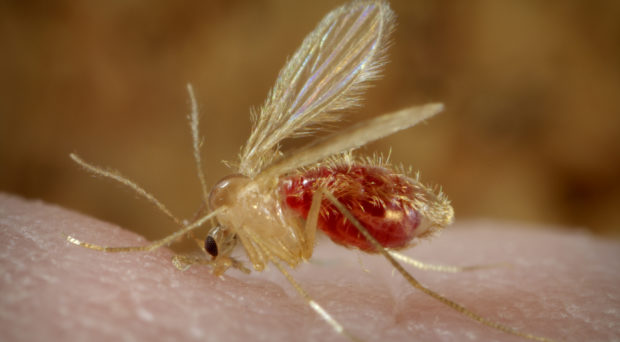Prevalent in habitats ranging from rainforests in Central and South America to deserts in the Middle East and Africa, a devastating protozoan parasite carried by tiny flies infects over a million people each year.
This parasite, which belongs to the Leishmania genus, enters the body through the bite of an infected sand fly. Once inside the body, the parasite can cause two types of disease: Visceral or cutaneous leishmaniasis. In the case of visceral leishmaniasis, the parasite breaks down the internal organs, eventually leading to internal bleeding and, if left untreated, death. On the other hand, cutaneous leishmaniasis can cause severe skin lesions, and, at its worst, can even migrate and propagate inside of the nose, leading to the progressive destruction of the face.
Despite the potentially severe consequences of a Leishmania infection, there is currently no vaccine that protects against it. For centuries, doctors in several countries with high rates of the disease have had to resort to intentionally infecting people with the live parasite on their arm as a means of immunization. The immunity conferred from a Leishmania infection lasts for life, and although this method prevents the infection from occurring at more critical locations such as the face or internal organs, it is considered unethical and no longer practiced.
In collaboration with researchers from Ohio State University and the U.S. Food and Drug Administration, McGill researchers recently created an attenuated form of the parasite that can be used as a vaccine. They used CRISPR, a gene editing technology, to delete a single gene coding for a protein called centrin, which plays a key role in cell division. Without it, the parasite’s ability to replicate is very limited, and it cannot survive for long inside the body.
“Using CRISPR, we created a weakened parasite that is still alive but cannot cause disease. It still stimulated the same kind of immune response as the wild type parasite,” said Greg Matlashewski, a professor in the Department of Microbiology and Immunology at McGill who co-led the study, in an interview with The McGill Tribune.
The Leishmania genus comprises over 20 different species that cause different types of leishmaniasis— all of which are found in various parts of the world. Leishmania major (L.major) is the parasite that causes cutaneous leishmaniasis primarily in Europe, Asia, and Africa, while Leishmania mexicana (L.mexicana) causes cutaneous leishmaniasis primarily in North, Central, and South America.
Documented in a 2021 study, the first vaccine developed by the team targeted L. major. The safety and efficacy of this vaccine has been confirmed in mice, and human clinical trials are set to start in early 2023. In March 2022, the team published another study documenting the development of a vaccine against L. mexicana, which was also shown to be safe and effective in mice. Clinical trials for the L. mexicana vaccine will likely start in 2024.
Despite the development of two vaccines, each targeting a different parasite species, the researchers expect that the L. major vaccine will be effective at protecting against all cases of leishmaniasis.
“We will initially use the L. major vaccine for both cutaneous and visceral leishmaniasis, but if it doesn’t work, we have the L. mexicana one as a backup, which may work better in the [North, Central, and South America],” Matlashewski said.
The vaccines will be produced in India by the biopharmaceutical company Gennova. The estimated cost of an individual vaccine will be between two and five U.S. dollars. In contrast, a leishmaniasis treatment can cost up to $200 USD, and involves repeated drug injections with very unpleasant side effects.
Given its low cost, great capacity for production, and that immunity from Leishmania lasts for a lifetime, Matlashewski believes that the vaccine has the potential to have a significant global impact.
“The vaccine could certainly contribute to the elimination of leishmaniasis as a major public health problem.”








